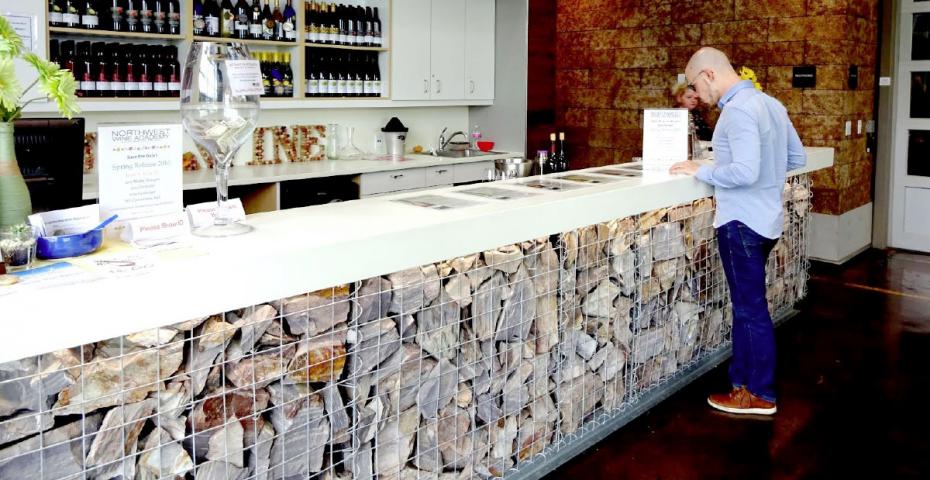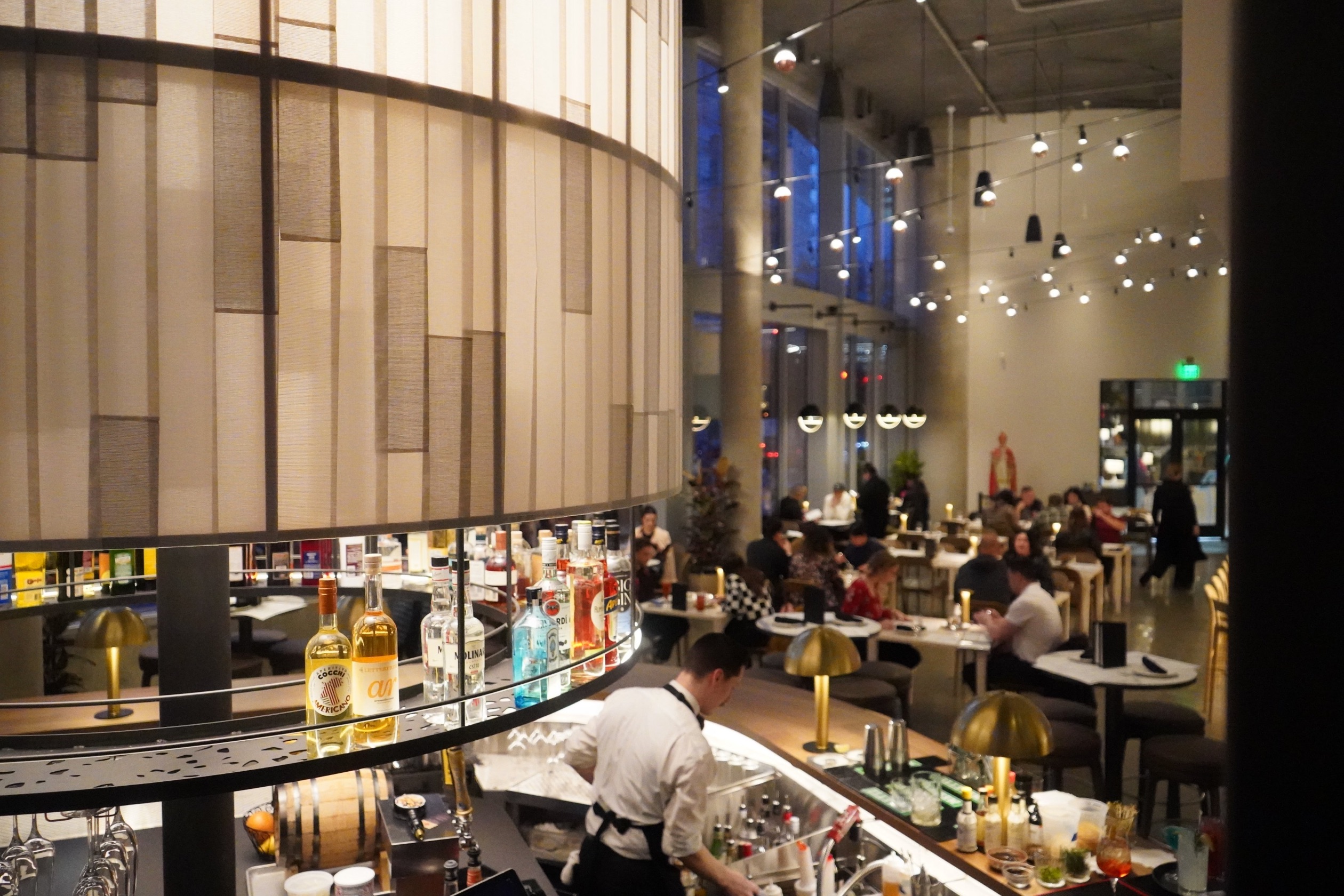The airy, light-filled tasting room at the Northwest Wine Academy would feel right at home in any of Seattle’s swankier neighborhoods. Designed with a distinctly northwest aesthetic, the walls are partially lined with beautiful reclaimed redwood and the tasting counter is faced with scores of basalt rocks brought back from eastern Washington. Large rollup glass doors let in plenty of light, even on gray Northwest days.
Even more appealing is the fact that the tasting room is open free to the public for wine tastings three afternoons a week and one Saturday each month. It’s hard to believe you’re just steps away from the north parking lot on the campus of South Seattle College.
Wine is big business in Washington state. Although Washington lags far behind California in sheer production, the state occupies the number-two slot in wine production in the U.S. In 2014, there were more than 350 wine grape growers and 800 wineries in Washington state, producing 12.5 million case of wine, to the tune of $8.6 billion.
Wine grapes were first planted at Fort Vancouver, Wash., by the Hudson’s Bay Company nearly 200 years ago, but today the majority of wine production takes place in eastern Washington, where long, warm, sun-lit days are the norm during the growing season. Wine schools have followed suit, with three schools and programs focused on viticulture or enology clustered in the eastern part of the state.
That all changed in 2004, when the Northwest Wine Academy opened its doors in West Seattle. The academy is the first and only working and teaching winery west of the Cascade Mountains. Wines produced by the students, some 1,000 cases a year, have consistently won local and regional awards.
Even from the start, the wine academy was a popular place. The school opened with about 50 students; the program now welcomes about 150 students each quarter. “We’ve grown tremendously over the years,” says Regina Daigneault, wine technology coordinator and instructor. “When we opened, we took over a space previously used by the floristry program when that industry fell on hard times. It was a great spot for us because it already had refrigeration and there was room to expand. ”
Daigneault was raised in Philadelphia but her family roots go back to Campania and Abruzzo. She has spent more than 30 years in the restaurant and wine industries. “My father owned a bakery and we lived above the shop,” she said. “Each day before school, I would help prepare the dough, and when I came home from school I helped out, as well. I learned early on to appreciate good food and wine. It was more of a European way of life.”
Her background complements the wine academy offerings, where three degree tracks are available: winemaking, wine marketing and sales, and food and wine pairing. Students can earn either a certificate or an Associate of Applied Science. The academy partners with several international organizations, including the Apicius International School of Hospitality in Florence, Italy, for internships and study-abroad opportunities. In addition to hosting occasional Italian wine seminars at the school, Daigneault is taking 30 students to Italy in June on a food and wine tour that she designed.

Each degree track offers plenty of hands-on experience. Winemaking students, for example, go out and pick grapes, crush them and follow the wines through to final production. Students who choose the wine marketing track might prepare sales materials or manage events in the tasting room. There are numerous opportunities to volunteer at wineries and events throughout the year and to network with an eye toward future job openings.
The building space includes an outside crush pad for processing grapes, a fermentation room with temperature-controlled tanks, and an on-site laboratory that doubles as a classroom.
Classes attract students from all ages and experience levels. Some students are just starting out in the wine industry, and others are wine enthusiasts who want to broaden their knowledge. Still others are seasoned wine professionals seeking to enhance their skills or get up-to-date on current trends. On average, students take about two years to complete a degree.
Luca Giatti, a student from Milan who moved to Seattle last year, is enrolled in the food and wine pairing program and studying to be a sommelier. “I started out in the tech industry, but that was not for me,” he said. “I’ve since spent 9 years in restaurants and have been studying wine for about three years.”
Daigneault wants to instill in her students respect and appreciation for wine, an approach she thinks is particularly important in the United States. “In the U.S., we think of wine as alcohol, while most of the rest of the world considers it part of the meal,” she explained. “Even the government agency regulating the industry in the U.S. lumps it together with tobacco and firearms. In Italy, wine is under the agriculture division.”
Giatti appreciates the distinction. “At the Northwest Wine Academy, we’re not just learning to recognize wines,” he said. “We’re learning about the history and culture of wine, about geography and geology, even about chemistry and biology. There is so much that goes into a bottle of wine to make it what it is.”
To learn more about the Northwest Wine Academy, visit www.nwwineacademy.com.































